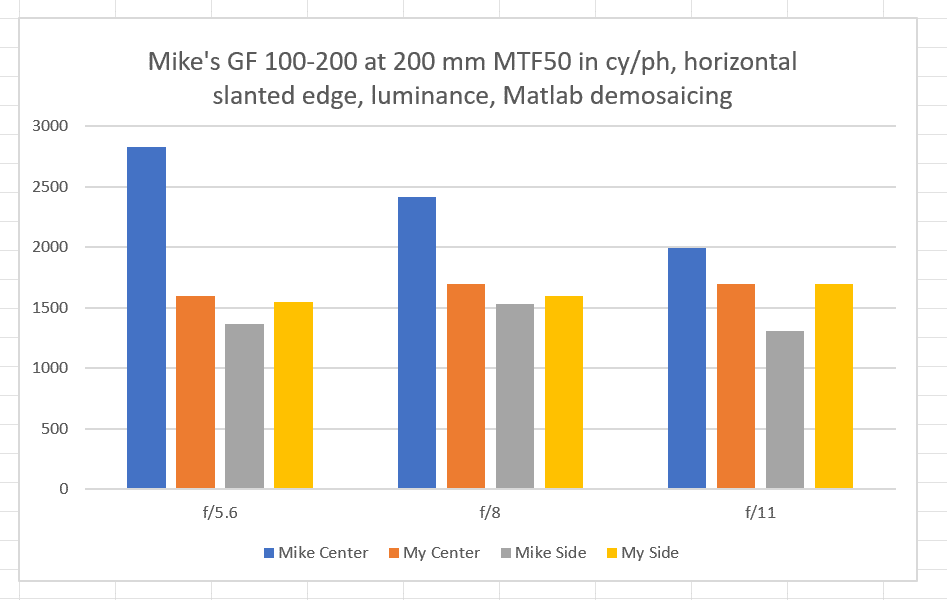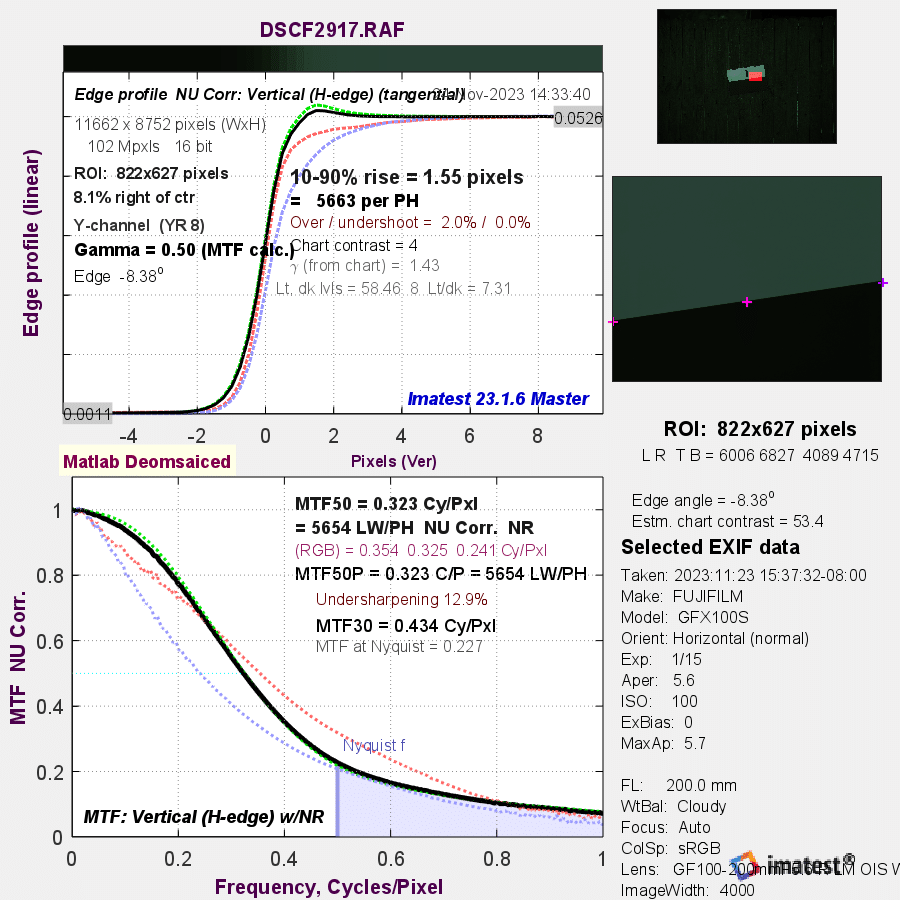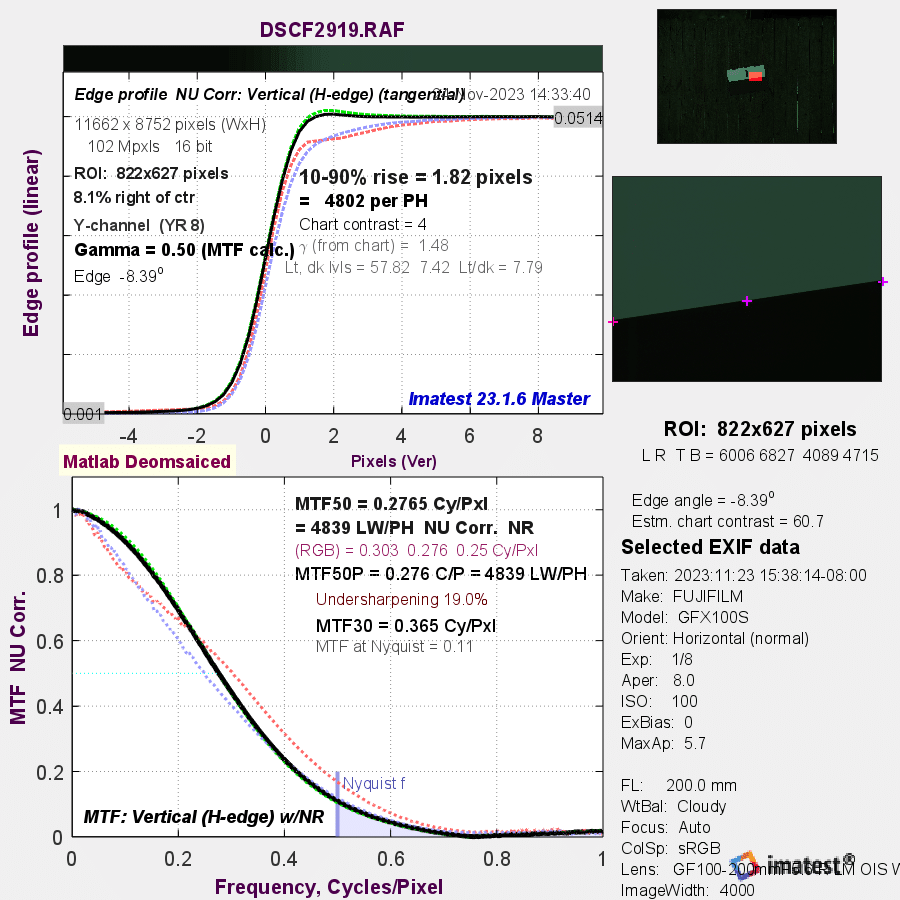When I measured the performance of the GF 100-200mm f/5.6 lens at 200 mm, I got good, but not great results. In fact, it was about the weakest performance I’ve seen with the excellent line of GF lenses. Ever since I published those results, people have been saying that their copy of the GF 100-200 is better than the one I tested. I now have some results from raw files that a reader sent me, and the people who have been pointing at sample variation have a point.
Here are the results with the GFX 100S. Explanation will follow below.
MTF stand for modulation transfer function. It is a measure of system contrast versus spatial frequency. MTF50 is the spatial frequency at which the contrast is half of what it is at a frequency equal to zero. It’s a good measure of perceived sharpness under some common viewing conditions. I’m expressing MTF50 in cycles per picture height.
In the center at f/5.6 and f/8, Mike got significantly better results than I did. At the right side of the frame, with a radial edge, my results and Mike’s results were about the same.
There were some differences in methodology that you should know about:
- Mike took several pictures at each f-stop. I picked the sharpest. I used focus bracketing to get the sharpest image in my series.
- For Mike’s images, I used Matlab standard demosaicing (gradient-corrected linear interpolation), and calculated the luminance MTF. For my images, I white balanced the raw channel MTFs to get luminance. This difference favors Mike’s numbers, but not nearly enough to explain the differences seen at f/5.6 and f/8 in the center.
Here’s a look at the center MTF curves for the sharpest f/5.6 image in Mike’s series:
The overshoot in the edge profile is evidence that the MAtlab demosaicing is doing some sharpening. Quite a bit of longitudinal chromatic aberration (LoCA) is present, as shown by the difference between the green, red, and blue curves.
At f/8:
The effective LoCA is less at f/8 than at f/5.6.



Jerry says
Differences in picture taking methodology are understandable, but why did you process the images differently?
Could you update this test by applying to all images the same processing with white balanced raw channel MTFs? In this way your comparison would be much more reliable (with a small handicap to Mikes images, as the best picture can be missed in a random series of pictures) and at the same time you would test the influence of different processing methodology on MTF results.
JimK says
The code that I used earlier requires a stack of images. I could go back and look for the old exposures, but it would be a lot of trouble.
JimK says
Here you go:
https://blog.kasson.com/gfx-50s/sample-variation-in-the-fujifilm-gf-100-200-at-200mm-revisited/